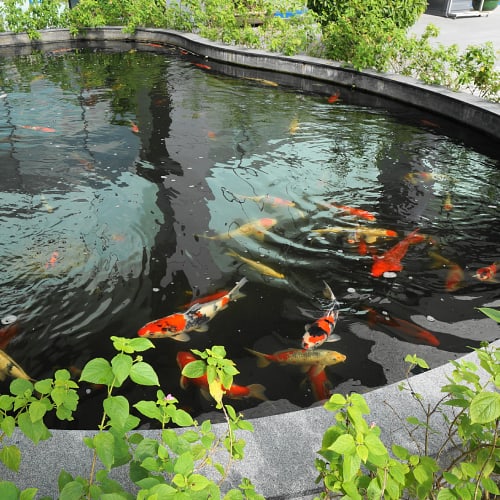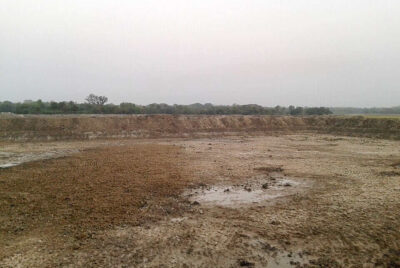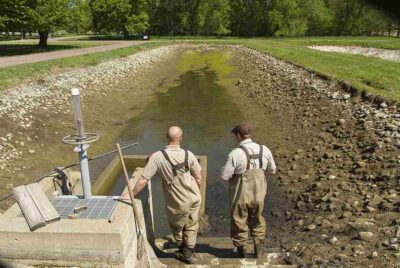How Deep Should a Koi Pond Be
As an aspiring koi enthusiast or an existing one seeking to optimize your koi pond, you may often find yourself pondering over one critical question – “how deep should a koi pond be?”. The depth of a koi pond holds a critical role in the overall health and well-being of your koi fish, which makes it an aspect that requires careful consideration and planning. This comprehensive guide aims to provide a detailed explanation on the ideal depth for a koi pond, factors affecting it, and additional considerations to ensure your koi live a healthy and vibrant life.
Understanding the Importance of Koi Pond Depth
Contrary to popular belief, the design of a koi pond is not just about aesthetics. The depth of your pond is a fundamental factor that directly impacts the health and survival of your koi fish. A shallow pond may lead to overcrowded conditions and may also increase the risk of injury and accumulation of waste. On the other hand, a pond that’s too deep may result in difficulty in maintenance due to inadequate access to oxygen and sunlight at the bottom.
The ideal depth of a koi pond is a delicate balance that, when achieved, can significantly enhance the volume and capacity of your pond, even if the surface area is limited. Therefore, it’s essential to understand how deep a koi pond should be to ensure the well-being of your koi fish and the overall aquatic ecosystem.
Determining the Optimal Depth for Koi Fish
Koi fish, renowned for their vibrant colors and majestic beauty, prefer varying depths ranging from 4 to 21 feet, depending on the size of the pond. For smaller ponds, a depth of 4 feet is recommended to prevent rapid water evaporation during the summer and to offer some protection from predators. A depth below 3 feet may prove detrimental to koi, especially if your pond is accessible to wild animals.
A minimum depth of 3 feet is acceptable in areas with mild climates, but a greater depth is necessary to combat winter conditions. A depth of at least 4 feet provides proper overwintering conditions for koi, as they would have enough space to move away from an icy surface. As koi are poikilothermic (cold-blooded) animals, their metabolism is affected by surrounding temperatures. A pond bottom that remains relatively warm during the winter is vital for their survival.
For those aspiring to rear jumbo koi, a depth of 6 – 8 feet would be preferable. Jumbo koi varieties can reach a length of 34 – 36 inches (86 – 91 cm), and they would need ample space to navigate vertically in your pond.
Additional Factors to Consider
Besides the preference of your koi, there are several other factors to consider when determining the depth of your koi pond.
1) Co-habitants of the Koi Pond
The depth of your pond will also influence the type of species you can house alongside your koi. Smaller pond fish, such as goldfish and other carp varieties, can tolerate a depth of 2 – 4 feet as long as the pond is not overcrowded. Larger species, such as largemouth bass and sturgeon, will require a greater water volume. An inadequate depth may increase the risk of aggression between species and may even result in the loss of some fish.
2) Presence of Aquatic Plants
Aquatic plants have varied pond depth requirements. Some species prefer deep water and may adversely respond to a shallow depth. Water lilies, for instance, require a depth of 3 feet or more. The minimum requirements of koi are suitable for many aquatic and marginal plants. To optimize the growth of a variety of plants alongside koi, consider having different depth levels.
3) Maintenance and Operating Costs
Maintaining a deeper pond is inevitably more expensive. A greater water volume will require more energy for adequate oxygenation and filtration. Depending on your pond’s depth and surface area, you may need to invest in more pumps and/or filters to ensure that the pond bottom receives ample oxygen and fresh water.
Understanding Koi Behavior in Relation to Pond Depth
While it’s essential to provide adequate depth for your koi, it’s interesting to note that koi prefer to stay within 2 feet of the water’s surface. However, they may venture to deeper regions of the pond for various reasons, such as seeking more stable temperatures or hiding from predators.
Calculating the Ideal Pond Volume
Understanding the volume of your pond is crucial for maintaining the health of your koi. It helps to ensure that your pond can accommodate the number of fish you plan to have and that they have enough room to move around. The length and width of your pond should always be greater than the depth.
Here are some formulas to help with calculations:
- Volume for a square or rectangle pond: Length of pond (ft.) x width of pond (ft.) x average depth of pond (ft) x 7.5 = volume in gallons
- Volume for a round pond: Diameter of pond (ft.) x diameter of pond (ft.) x average depth of pond (ft) x 5.9 = volume in gallons
- Surface area for a square or rectangle: Length of pond (ft.) x width of pond (ft.) = surface area in square feet
- Surface area for a round pond: Radius of pond (ft.) x radius of pond (ft.) x 3.14 = surface area in square feet
Pros and Cons of a Deeper Koi Pond
Having a deeper pond comes with its own set of advantages and disadvantages. The pros include protection from predators, better insulation during cold weather, and improved water quality. However, the cons include the possibility of low oxygen levels in depths greater than 10 feet, increased maintenance requirements, and higher costs.
Understanding the Winter Requirements for a Koi Pond
During winter months, it’s crucial that your koi pond is deep enough to protect your koi from freezing temperatures. Koi spend most of the winter towards the bottom of the pond, and deeper ponds can better insulate them from the cold.
Conclusion
Understanding how deep a koi pond should be is crucial for maintaining a healthy environment for your koi fish. By considering factors such as the preferences of koi, the presence of other species, aquatic plants, and maintenance costs, you can determine the optimal depth for your koi pond. However, it’s essential to remember that every pond is unique, and what works for one might not work for another. Therefore, it’s advisable to seek professional help when planning and building your koi pond.
Frequently Asked Questions (FAQs)
Q: Is it better to have a deeper koi pond?
A: Yes, deeper koi ponds offer several benefits, including protection from predators, improved water quality, and better insulation during cold weather.
Q: What is the minimum depth for a koi pond?
A: The minimum depth for a koi pond should be at least 3 feet. However, a depth of 4 feet is recommended for optimal conditions.
Q: Can a koi pond be too deep?
A: Yes, a koi pond can be too deep. Depths greater than 10 feet can lead to low oxygen levels, which can be harmful to your koi.
Q: How does the depth of a koi pond affect the health of the koi fish?
A: The depth of a koi pond directly impacts the health and survival of your koi fish. A shallow or overcrowded pond can increase the risk of injury and accumulation of waste, while a pond that’s too deep may pose difficulties in maintenance.
Q: How does the depth of a koi pond affect the maintenance and operating costs?
A: The depth of a koi pond significantly affects the maintenance and operating costs. A deeper pond will require more energy for proper oxygenation and filtration, leading to higher costs.




